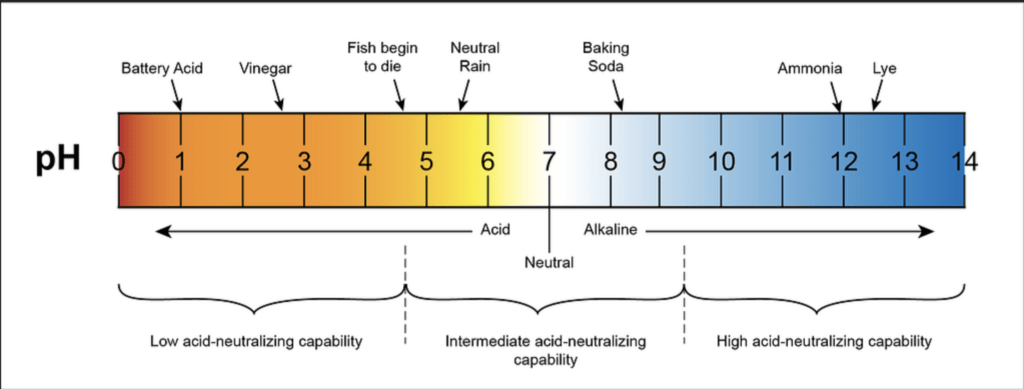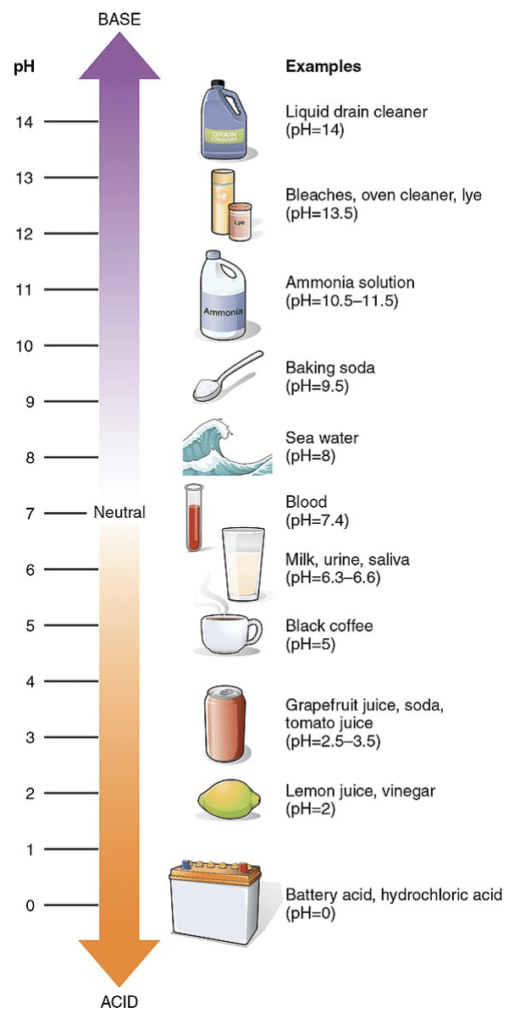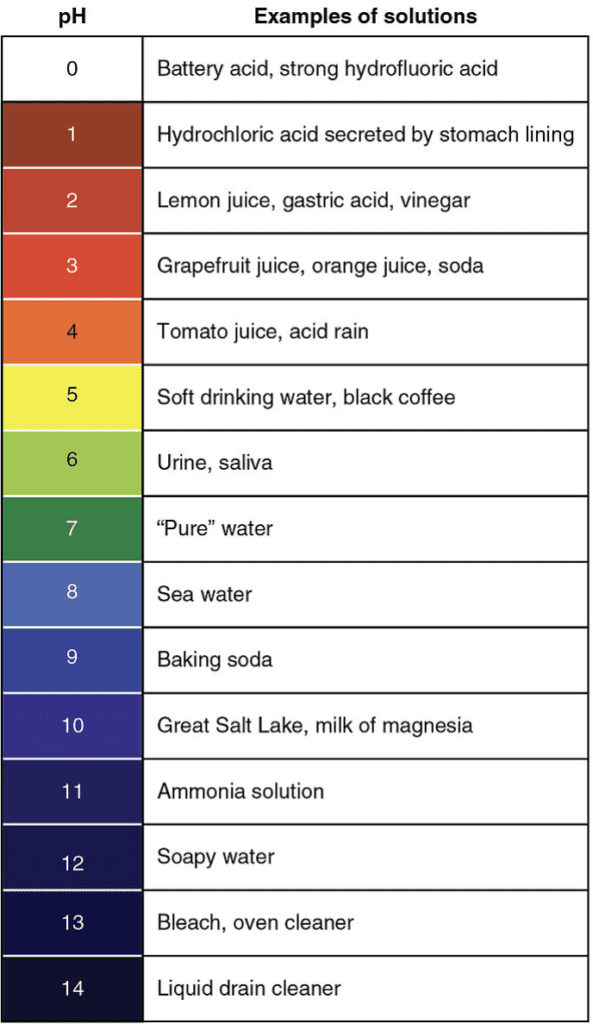I. Introduction
A. Brief explanation of the pH scale and its significance
The pH scale is a measurement system used to determine the acidity or alkalinity of a substance. It is a logarithmic scale that ranges from 1 to 14, with 7 being neutral. Understanding pH is crucial for various fields, including skincare.
B. Overview of the acid mantle and its role in skin health
The acid mantle refers to the thin, protective film on the surface of the skin. It is composed of natural oils, sweat, and skin cells, creating a slightly acidic environment. The acid mantle plays a vital role in maintaining healthy skin and protecting it from external factors.
C. Thesis statement: This article will delve into the details of the pH scale and the importance of maintaining a balanced acid mantle for healthy skin.


II. Understanding the pH Scale


A. Definition of pH and its origin
pH stands for “power of hydrogen” and represents the concentration of hydrogen ions in a solution. It was introduced by the Danish chemist Søren Sørensen in 1909.
B. Explanation of the pH scale from 1 to 14
The pH scale ranges from 1 to 14, with values below 7 considered acidic, values above 7 alkaline, and 7 itself being neutral.
C. The meaning of neutral (pH 7.0), acidic (pH 1.0), and alkaline (pH 14.0)
A pH of 7.0 is considered neutral, while a pH below 7.0 indicates acidity, and a pH above 7.0 indicates alkalinity.
D. Discussion on the logarithmic nature of the pH scale
The pH scale is logarithmic, meaning that each unit represents a tenfold difference in acidity or alkalinity. For example, a substance with a pH of 5 is ten times more acidic than a substance with a pH of 6.
III. Acids and Their Characteristics


A. Definition of acids and their composition
Acids are substances that release hydrogen ions (H+) when dissolved in water. They are characterised by their sour taste and ability to corrode certain materials.
B. Explanation of the dissociation of hydrogen ions in acids
When an acid dissolves in water, it dissociates into hydrogen ions (H+) and corresponding negatively charged ions.
C. Common properties and behaviours of acids
Acids have properties such as sour taste, reactivity with metals, and the ability to turn blue litmus paper red.
D. Examples of acids and their uses
Examples of acids include citric acid (found in citrus fruits), acetic acid (vinegar), and hydrochloric acid (used in cleaning and manufacturing processes).
IV. Alkalis and Their Characteristics


A. Definition of alkalis and their composition
Alkalis, also known as bases, are substances that release hydroxyl ions (OH-) when dissolved in water. They are characterised by their bitter taste and slippery texture.
B. Explanation of the presence of hydroxyl ions in alkalis
When an alkali dissolves in water, it releases hydroxyl ions (OH-), which can accept hydrogen ions.
C. Common properties and behaviours of alkalis
Alkalis have properties such as bitter taste, ability to turn red litmus paper blue, and the capacity to neutralise acids.
D. Examples of alkalis and their uses
Examples of alkalis include sodium hydroxide (caustic soda), potassium hydroxide (potash), and ammonia (used in cleaning products).
V. The pH of the Skin
A. Introduction to the concept of skin pH
The pH of the skin refers to the acidity or alkalinity level of the skin’s surface. It is influenced by various factors and plays a crucial role in maintaining skin health.
B. Factors influencing the pH of the skin
The pH of the skin can be influenced by genetics, age, environmental factors, skincare products, and lifestyle choices.
C. Normal range of skin pH (5.5-6.5) and its significance
The normal range of skin pH is slightly acidic, typically between 5.5 and 6.5. This pH range is crucial for optimal skin health and function.
D. Effects of imbalanced skin pH on skin health
When the skin’s pH becomes imbalanced, either becoming too acidic or too alkaline, it can disrupt the skin’s barrier function, leading to various skin issues such as dryness, sensitivity, inflammation, and increased risk of infection.
VI. The Acid Mantle and Its Functions


A. Definition and composition of the acid mantle
The acid mantle is a thin, protective film on the skin’s surface composed of natural oils (sebum), sweat, and dead skin cells. It forms a barrier that helps maintain the skin’s health and integrity.
B. Formation of the acid mantle through sebum and sweat interaction
The acid mantle is formed through the interaction of sebum, produced by sebaceous glands, and sweat, secreted by sweat glands. These substances mix to create an environment with a slightly acidic pH.
C. Protective functions of the acid mantle
The acid mantle acts as a protective barrier against harmful bacteria, fungi, and other pathogens. It also helps regulate moisture levels and supports the skin’s natural exfoliation process.
D. Role of the acid mantle in preventing bacterial and fungal growth
The slightly acidic pH of the acid mantle creates an unfavourable environment for the growth of harmful bacteria and fungi, reducing the risk of skin infections and other issues.
VII. Maintaining a Healthy Acid Mantle
A. Importance of maintaining the acid mantle for overall skin health
Preserving a healthy acid mantle is crucial for maintaining overall skin health, as it helps support the skin’s natural functions and defenses.
B. Tips for preserving the acid mantle
- Appropriate skincare practices: Use gentle cleansers, avoid over-washing, and opt for pH-balanced skincare products.
- Avoidance of harsh products and excessive cleansing: Harsh cleansers, hot water, and excessive exfoliation can strip away the acid mantle, leading to imbalances.
- Balanced diet and hydration: A balanced diet and proper hydration contribute to overall skin health and pH balance.
- Effects of environmental factors on the acid mantle: Protect the skin from excessive sun exposure, pollution, and other environmental factors that can disrupt the acid mantle.
C. Impact of disruptions to the acid mantle and potential skin issues
Disruptions to the acid mantle can lead to various skin issues, including dryness, sensitivity, acne, dermatitis, and accelerated skin aging.
VIII. Restoring the Acid Mantle
A. Remedies for restoring an imbalanced acid mantle
- Use of pH-balanced skincare products: Choose skincare products specifically formulated to restore and maintain the skin’s pH balance.
- Natural remedies and ingredients: Some natural ingredients like aloe vera, chamomile, and green tea have soothing and pH-balancing properties.
- Consultation with a dermatologist for severe imbalances: In cases of severe imbalances or persistent skin issues, it is advisable to seek professional guidance from a dermatologist.
B. Timeframe for the acid mantle to recover
The timeframe for the acid mantle to recover varies depending on the individual and the severity of the imbalance. With consistent use of appropriate skincare practices and pH-balanced products, the acid mantle can usually restore its balance within a few weeks to a couple of months.
IX. Conclusion
A. Recap of the pH scale and its relevance to the acid mantle
Understanding the pH scale and its significance in skincare is essential for maintaining a balanced acid mantle.
B. Emphasis on the importance of maintaining a balanced acid mantle for healthy skin
Maintaining a balanced acid mantle is crucial for overall skin health, as it helps protect against infections, maintain hydration, and support the skin’s natural functions.
C. Final thoughts on the significance of understanding pH and the acid mantle for skincare
By understanding the pH scale and the importance of the acid mantle, individuals can make informed choices about skincare practices and products to promote and preserve healthy skin.

